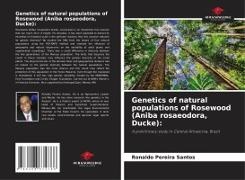Read more
Rosewood (Aniba rosaeodora Ducke, Lauraceae) is an Amazonian tree species that can reach 30 m in height. For decades, it has been exploited to extract its essential oil (linalool) used in the perfume industry. Has this practice reduced its genetic diversity? We studied the DNA from the leaves of four natural populations using the PCR-RAPD method and checked the influence of geography and natural dispersers on the variability of adult plants and regeneration (seedlings). There was a small difference in diversity between the two generations of the Manaus population. The birds that disperse the seeds in these samples may influence the greater diversity of the small plants. The physical barrier of the Amazon River and geographical distance had an impact on the genetic diversity between the natural populations. The Manaus population was the most diverse and this result may reflect the protection of this population in the Forest Reserve. Even though the rosewood is threatened, it still has high genetic variability. Funded by the MMA/PNMA, Ford Foundation and Carlos Chagas Foundation. Carried out at INPA's Master's in Forestry Sciences. Also supported by Embrapa/Cpaa, Manaus-AM.
About the author
Ronaldo Pereira Santos. Er ist Agrarwissenschaftler, Jurist und Master. Er hat im Bereich der Genetik im Amazonasgebiet geforscht. Er ist Bundesexperte bei INCRA, wo er Abteilungsleiter und stellvertretender Superintendent in Manaus-AM war. Er ist spezialisiert auf Gutachten und Rechtsfälle in den Bereichen Land, Immobilien, Umwelt und Landwirtschaft.

